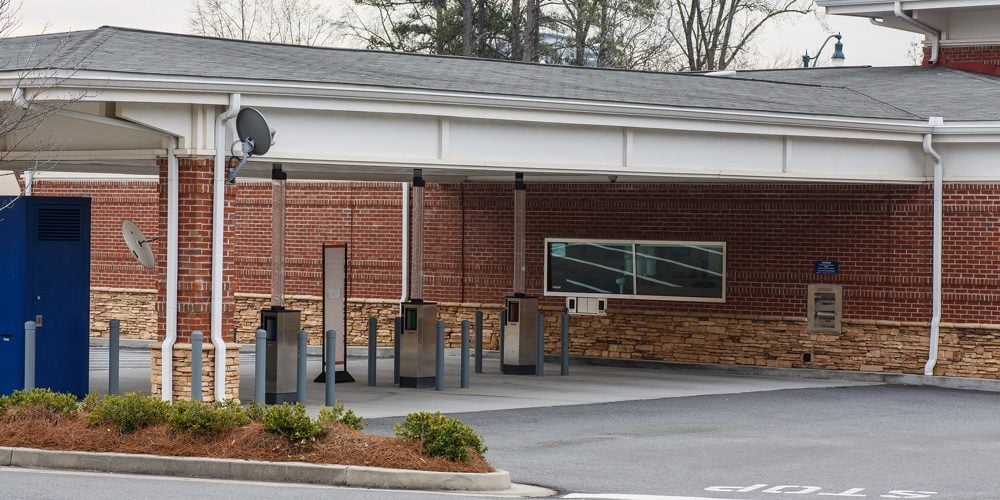The 2021 credit union branch: To be or not to be

Call this the credit union Hamlet moment: To be or not to be, that is the 2021 question around the future of branches.
Suddenly, amid the pandemic, with many branches closed, many others open fewer hours, some credit unions requiring appointments for branch visits, and most credit unions reporting a surge in member use of digital banking tools, a question is getting asked that few expected. “Some credit unions are asking if they need branches,” said Doug Brown, a senior vice president and GM of Digital Banking at NCR.
Brown acknowledged that only a few credit unions are seriously contemplating a digital only future. But the simple fact that the question is getting asked in credit union c-suites – and asked not by propellerheads – illustrates how profoundly the Covid-19 pandemic has impacted thinking about branches.
Good news is that there is a recent data dump on credit unions and branches from Lakeview CO back office support CUSO Aux and an upshot is that, yes, considerable fresh thought is indeed reshaping the 2021 branch.
A fact jumps out of the report: 2020 is a watershed year in member usage of digital banking tools. Reported Aux, “It’s no surprise 25% of participants responded that online banking transaction volumes are significantly higher than 2019 and that 70% said somewhat higher. Mobile banking transactions nearly mirror those results of online banking transactions.”
The takeaway: digital banking now is central to the credit union experience. Few experts envision a wholesale abandonment of digital as the pandemic recedes. Many members have discovered the convenience of, for instance, mobile remote deposit capture and P2P money transfers using tools such as Zelle and they probably will stick with digital.
Even so, under 13% of the 53 credit union decisionmakers surveyed by Aux said they planned to close branches in the next three years due to drops in traffic.
NCR agreed and it predicted that “Branches will remain relevant, but they must adapt to become part of the larger ecosystem. There will be a continued evolution of self-service, one that includes leveraging technology to provide touchless alternatives and increased automation to enable continued access to cash.”
Farmington Hills, MI CUSO Member Driven Technologies sees much the same. Its 2021 prediction is this: “Branches will remain relevant, but they must adapt to become part of the larger ecosystem. There will be a continued evolution of self-service.”
Aux survey data reported similar with 57% of executives it surveyed saying their plans included ITMs, kiosks, and other self-service options in branches.
Aux added: “We asked participants what the branch of the future will include. Drive-up lanes, ATMs, video conferencing, and remote teller assistance (ITMs) scored highest. Lowest were employee-less branches and kiosks. And when asked if the branch of the future will be smaller, over 80% said yes.”
MDT CEO Larry Nichols agreed that branches will shrink. According to him, branches of tomorrow will be smaller and will also feature more self-serve technologies – ATMs for cash dispensing, for instance. Figure perhaps 600 to 750 sq. ft. for new branches. The era of the 4000 sq. ft. and bigger, freestanding branch is ending, predict many experts.
The Aux report throws an unexpected curveball into the works with this observation: “Let’s not forget the collaborative service of the century: Shared Branching. For the 1,600 credit unions who participate nation-wide, how shared branching plays a role in their future is ever-present indeed. The majority of our survey participants are decision makers at credit unions who are part of the Shared Branching Network. When asked if shared branching becomes more or less important if credit unions operate fewer branches in the future, two-thirds responded more.”
It might seem counter-intuitive in a discussion of the shrinking of credit union branches to say this will up the value of shared branching. But that’s not how Nathan Rogers, an executive with shared branching firm InNetwork, a sister organization with Aux, sees this. What he insisted is that as credit unions shrink their branch networks, the importance of belonging to a shared branching consortium increases.
For the record, around 1850 credit unions belong to the big CO-OP Shared Branching Network and collectively they have around 6000 branches. That is about as big as the biggest bank branch network – Wells Fargo with its 6000 branches.
With shared branching, Rogers explained, a credit union could shrink its branch network with no significant impacts on member services and access.
Bottomline: branches are not going away at most credit unions. They are getting smaller, some institutions will have fewer, and many institutions will see a jump in their member usage of shared branching. The branch will remain a credit union cornerstone. But it will be a different branch, with many more digital features.
It’s just not going away, not even in the pandemic.

